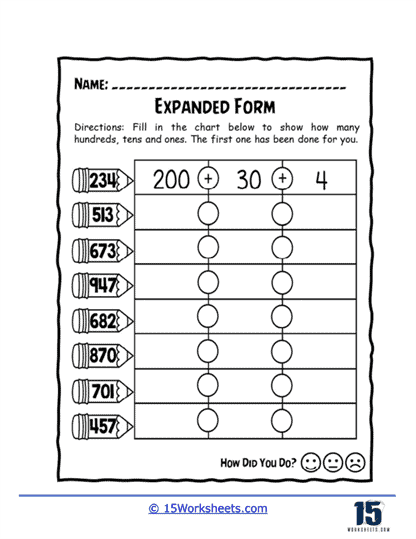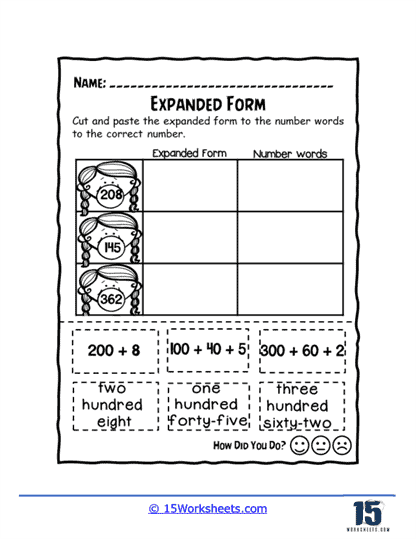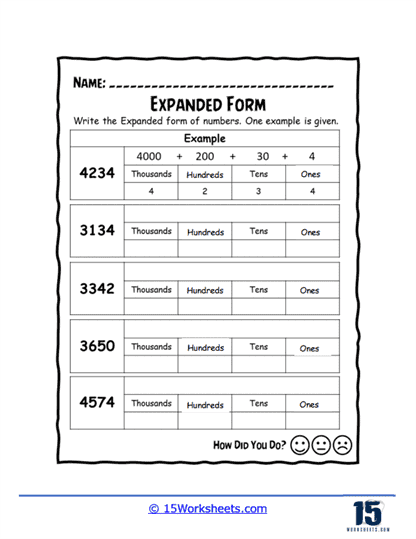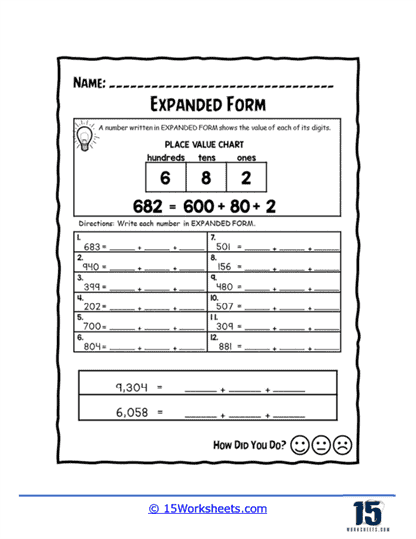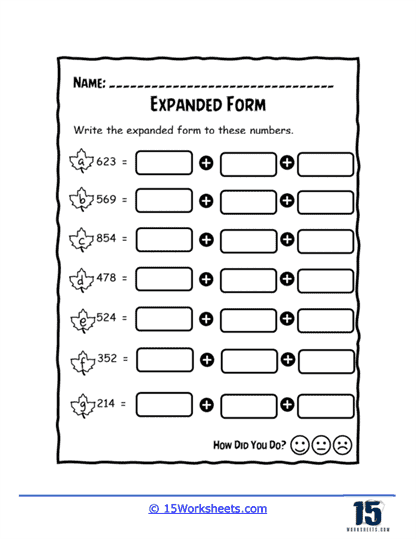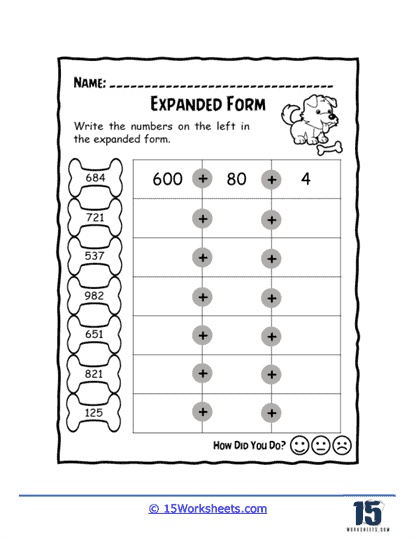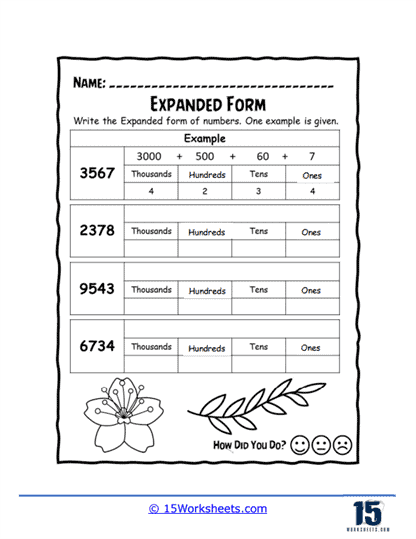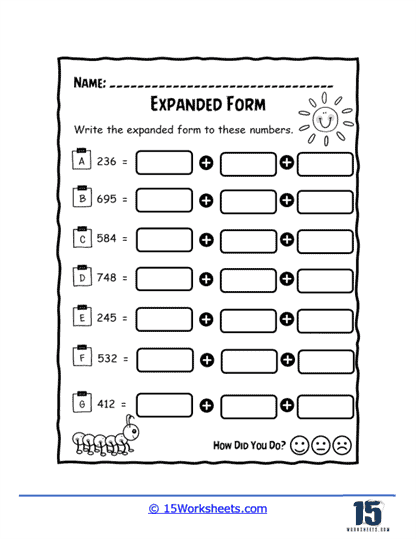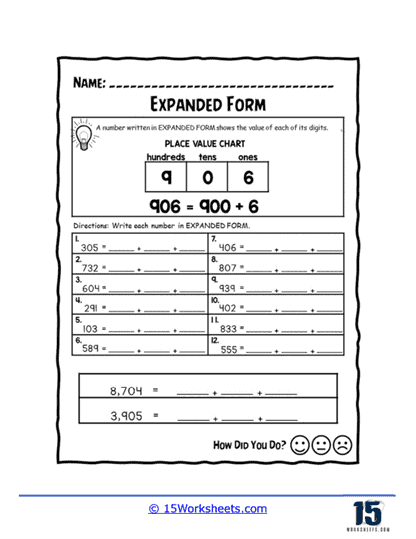Expanded Form Worksheets
About These 15 Worksheets
Think of numbers as treasure chests filled with shiny digits. Expanded Form worksheets teach you how to unlock these chests and display the digits separately to understand their values better. It’s like taking apart a puzzle and seeing how each piece fits into the big picture. With Expanded Form, you’ll learn to break down numbers into their individual parts, giving you a clearer view of how they work.
By understanding how numbers are broken down in Expanded Form, you’re also becoming a master of place value. You’ll know why a digit in the tens place is smaller than the one in the hundreds place, and so on. Expanded Form allows you to see numbers from the inside out. It’s like peeking into a machine to understand how it works. You’ll be able to grasp the value of each digit and how they interact.
Types of Problems On These Worksheets
Breaking Down Digits – The simplest exercise involves taking a number and writing it in its expanded form. For instance, if you have the number 532, you’ll break it down as 500 + 30 + 2. This exercise helps you see how each digit contributes to the overall value of the number.
Understanding Place Value – This activity takes you on a journey into the heart of place value. Imagine you’re given the number 8,765. In expanded form, it’s 8000 + 700 + 60 + 5. Here, you’re revealing the value of each digit based on its position. This exercise connects the idea of Expanded Form with the concept of place value.
Adding and Subtracting in Expanded Form – Numbers love to play together! In this exercise, you’ll learn to add and subtract numbers in their expanded forms. For instance, when adding 4000 + 300 + 20 + 9 and 6000 + 100 + 50 + 2, you’ll see how the individual digits come together just like pieces in a puzzle.
Comparing in Expanded Form – Just like comparing sizes of animals, you’ll compare numbers using Expanded Form. When you see numbers like 6000 + 200 + 40 + 7 and 5000 + 300 + 60 + 8, you’ll determine which number is bigger or smaller. This helps you understand how different digits influence the magnitude of a number.
When Should You Write Values in Expanded Form?
Writing a number in expanded form is particularly useful in specific circumstances where you want to emphasize the individual components of the number and highlight its place value structure. Here are some situations where you might choose to write a number only in expanded form:
Reinforcing Understanding
When teaching or learning about place value, expanded form is a powerful tool. It helps students understand how each digit’s position affects the overall value of the number. Teachers often use expanded form to provide a clear visual representation of place value concepts.
If a student is struggling with grasping the concept of place value, writing numbers in expanded form can reinforce their understanding. By breaking down a number into its components, they can see the relationship between digits and place values more clearly.
Demonstrating Arithmetic Steps
In multi-step arithmetic problems, showing intermediate steps in expanded form can help students follow the logic of the calculations. It’s like showing your work in math to explain how you arrived at the solution.
Certain word problems involve breaking numbers down into their components to solve them effectively. Expanded form is handy in these situations, as it helps you analyze and organize information to solve the problem step by step.
Understanding Large Numbers
For exceptionally large numbers, expanded form can make them more manageable to comprehend. It allows you to break down the number into smaller units, making it easier to wrap your head around the magnitude.
In these situations, using expanded form helps enhance understanding, clarifies concepts, and provides a step-by-step breakdown of a number’s value. It’s a powerful tool for teaching, learning, and problem solving that shines when you want to focus on the intricate details of numbers and their place value relationships.




